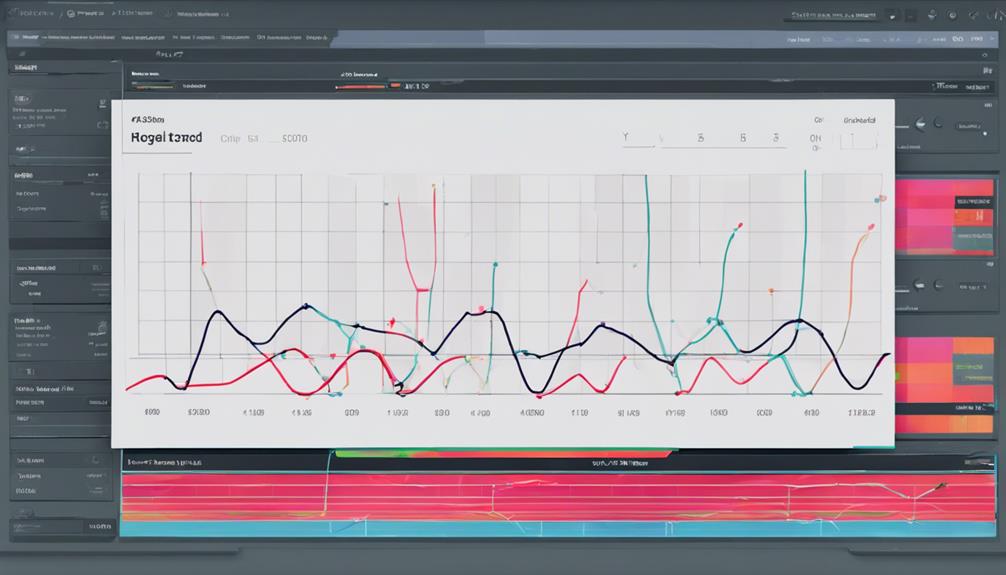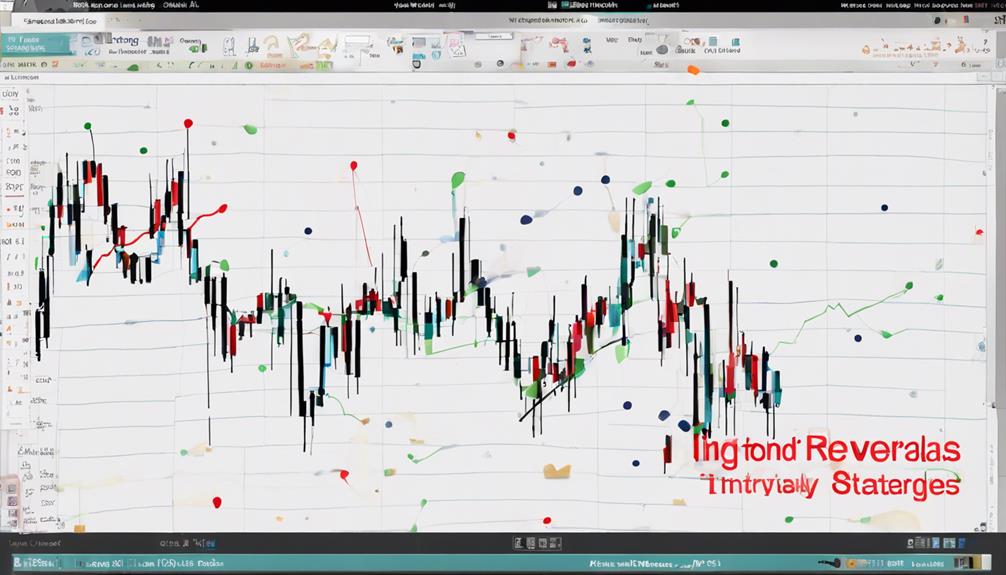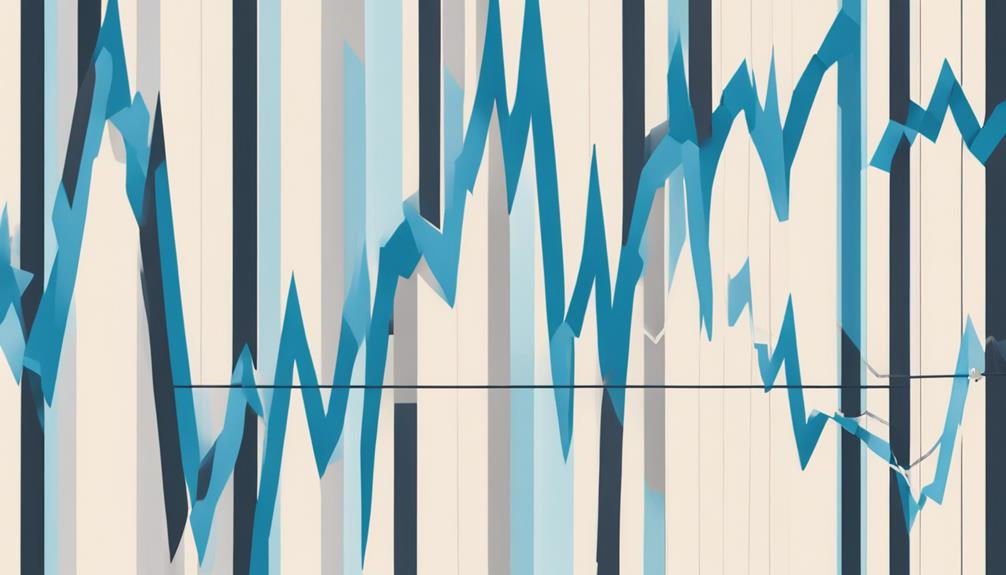In the realm of technical analysis, the Zig Zag Indicator holds a pivotal role for traders seeking clarity amidst market fluctuations. Its ability to filter noise and pinpoint meaningful price movements is a game-changer for many.
However, the real magic lies in the skillful optimization of this tool. By mastering the nuances of customizing settings and employing strategic approaches, traders unlock the full potential of the Zig Zag Indicator.
This mastery could very well be the differentiating factor between a novice and a seasoned trader.
Understanding Zig Zag Indicator Basics
Intermittently employed by technical analysts, the Zig Zag Indicator serves as a fundamental tool for identifying significant price movements in financial markets. By connecting swing highs and lows, it assists traders in filtering out minor price fluctuations to focus on essential trends.
The Zig Zag signals are crucial for spotting trend reversals and continuations, aiding in the identification of key entry and exit points. This tool is particularly useful for market analysis as it simplifies the process of trend identification by emphasizing significant highs and lows.
Moreover, traders can customize the percentage change threshold of the indicator to suit their trading strategies. The Zig Zag Indicator is often used in conjunction with Fibonacci retracement levels to enhance its effectiveness in determining potential price levels.
Optimizing Zig Zag Indicator Settings

Customizing the parameters of the Zig Zag Indicator, such as depth, deviation, and backstep, is essential for optimizing its efficiency in market analysis. By adjusting these settings, traders can personalize the indicator to better suit their individual trading strategies. Here are three key aspects to consider when optimizing Zig Zag Indicator settings:
- Depth: The depth parameter determines the minimum number of price bars between pivot highs and pivot lows. Increasing the depth can filter out more minor price fluctuations, focusing on larger market swings.
- Deviation: Deviation sets the minimum amount that the price must move in order to form a new peak or trough. A higher deviation can smooth out the Zig Zag line, while a lower deviation may capture more price movements.
- Backstep: Backstep specifies the number of bars that must be analyzed before a pivot high or low is confirmed. A larger backstep can prevent false signals but may lag in identifying trend changes.
Implementing Zig Zag Indicator Strategies

To effectively implement Zig Zag Indicator strategies, traders should integrate this technical tool with complementary indicators to enhance trend confirmation and identify key market levels. By combining the Zig Zag Indicator with momentum indicators, such as the RSI or MACD, traders can gain a better understanding of trend directions and potential entry or exit points.
Additionally, utilizing the Zig Zag lines to pinpoint support and resistance levels can help in making strategic trading decisions based on market dynamics. When looking for breaks in trend lines identified by the Zig Zag Indicator, traders can anticipate market direction changes and adjust their positions accordingly.
Incorporating Fibonacci retracement levels in conjunction with the Zig Zag Indicator allows for a more comprehensive trend analysis, aiding in identifying potential reversal points or continuation patterns. It is crucial to exercise caution when using the Zig Zag Indicator for swing trading, especially in volatile markets, to effectively manage risks associated with market uncertainties and fluctuations in swing highs and lows.
Enhancing Zig Zag Indicator Accuracy

Integrating specific adjustments to the Zig Zag Indicator parameters can significantly boost its precision and effectiveness in enhancing market trend analysis and identification. To enhance Zig Zag Indicator accuracy, consider the following:
- Adjust the Percentage Change Threshold: Refining the percentage change threshold can help filter out minor price fluctuations, providing a clearer picture of significant market movements.
- Customize Parameters: Tailoring parameters like depth and deviation to suit specific market conditions can enhance the indicator's precision, making it more attuned to the current trend dynamics.
- Utilize Other Technical Tools: Combining the Zig Zag Indicator with complementary technical tools such as moving averages or oscillators can improve trend identification by cross-verifying signals, leading to more accurate market analysis and better decision-making.
Avoiding Zig Zag Indicator Mistakes

Mistakes in utilizing the Zig Zag Indicator can significantly impact trading outcomes and market analysis accuracy. Incorrect parameter settings may lead to false signals and hinder accurate trend identification.
Relying solely on the Zig Zag Indicator without confirmation from other technical tools can result in poor trading decisions. It is crucial to consider market conditions and overall trend analysis to avoid missing potential opportunities while using the indicator.
Neglecting the lagging nature of the Zig Zag Indicator can cause delayed responses to trend changes, potentially resulting in losses. Additionally, subjective interpretation of the indicator signals without a clear trading plan can lead to confusion and inconsistent results.
To avoid these pitfalls, traders should use the Zig Zag Indicator in conjunction with other technical tools, consider market conditions, acknowledge its lagging nature, and ensure a clear trading plan is in place for more effective decision-making.
How Can I Maximize the Efficiency of the Zig Zag Indicator?
To optimize Zig Zag indicator steps, first, adjust the depth and deviation settings to customize the indicator’s sensitivity. Next, set the retract percentage to filter out small price movements. Finally, backtest the optimized settings on historical data to ensure accurate signals before using them in live trading.
Frequently Asked Questions
What Is the Best Setting for the Zigzag Indicator?
The optimal setting for the Zig Zag Indicator depends on the trader's strategy and risk tolerance. Experiment with 'Percentage Change' values between 3% to 15% to strike a balance between signal frequency and noise reduction, aligning with individual trading preferences.
What Is the Formula for Zigzag Indicator?
The formula for the Zig Zag Indicator calculates price movements based on a specified percentage change threshold. It connects swing highs and lows to filter market noise, aiding in trend identification. Customizable parameters allow traders to tailor the indicator to their preferences for effective market analysis.
How Accurate Is Zigzag Indicator?
The accuracy of the Zig Zag Indicator is notable as it effectively filters minor price fluctuations to reveal significant trends. By connecting swing highs and lows with a set percentage change threshold, it aids traders in spotting trend reversals and continuations with precision.
What Is the Zigzag Trading Algorithm?
The Zigzag trading algorithm employs swing highs and lows to identify trends, aiding traders in spotting reversals and continuations efficiently. It simplifies market analysis by filtering out minor price movements, offering a valuable tool for visualizing significant price changes.
Conclusion
In conclusion, the Zig Zag Indicator serves as a powerful tool for traders seeking to enhance their technical analysis capabilities.
By effectively filtering out noise and highlighting significant trends, this indicator aids in spotting potential reversals and continuations in the market.
Through careful customization of settings and strategic implementation, traders can maximize the efficiency of the Zig Zag Indicator to make informed trading decisions.
Remember, in the world of trading, precision and strategy are key components to achieving success.
